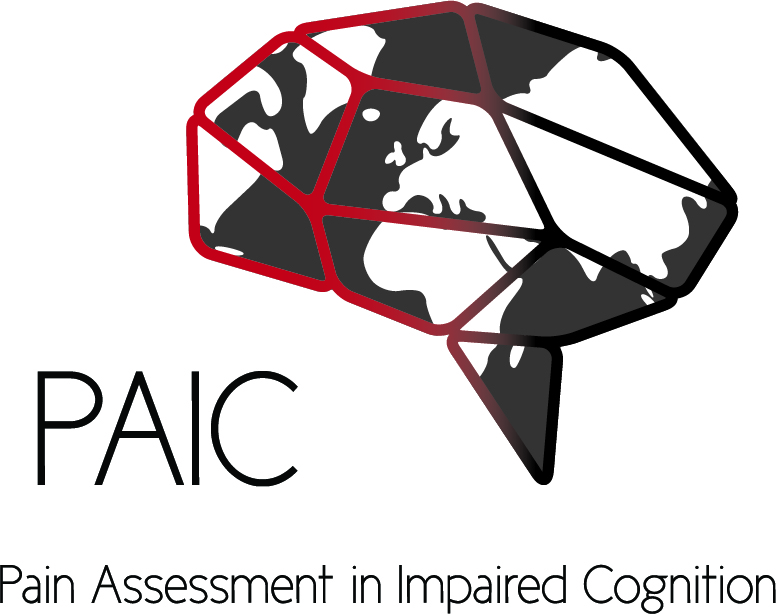The PAIC 15 scale
Pain assessment in impaired cognitionWhen pain can no longer be reliably communicated via self-report, the observation of pain-typical behaviors is particularly important. These behaviors include facial expressions, body movements and vocalizations.

The PAIC 15 scale
An international team of physicians, nurses, physiotherapists, epidemiologists and psychologists has developed an observational pain assessment scale for people with cognitive impairments, especially dementia: The Pain Assessment in Impaired Cognition (PAIC 15) scale. This initiative was funded by the EU COST program (COST Action TD 1005). The PAIC 15 scale contains a total of 15 behavioral descriptors, with 5 behavioral descriptors for each behavioral category of facial expressions, body movements and vocalizations. The facial expression category includes items such as “frowning” and “narrowing the eyes”. Examples for pain-indicative body movements are “restlessness” and “guarding”. “Groaning” and “shouting” are examples from the vocalization category. For each of these behavioral descriptors a brief explanation is given to better illustrate the exact meaning of each descriptor.
How to use the PAIC 15 scale?
If you want to use the PAIC 15 scale to assess pain in people with dementia, we recommend an observation time of at least 3 minutes. Do not only observe the patient in a resting situation, but especially during activities of daily living (e.g. getting washed, getting mobilized).
An advice on the intensity scoring: If you have observed a behavior score choose “moderate degree” as the default intensity. The options “”slight degree and “moderate degree” should only be chosen to mark very weak or very strong responses, respectively.
To improve your ability to assess pain using the PAIC 15 scale, we also recommend that you follow a special E-training that we developed.
